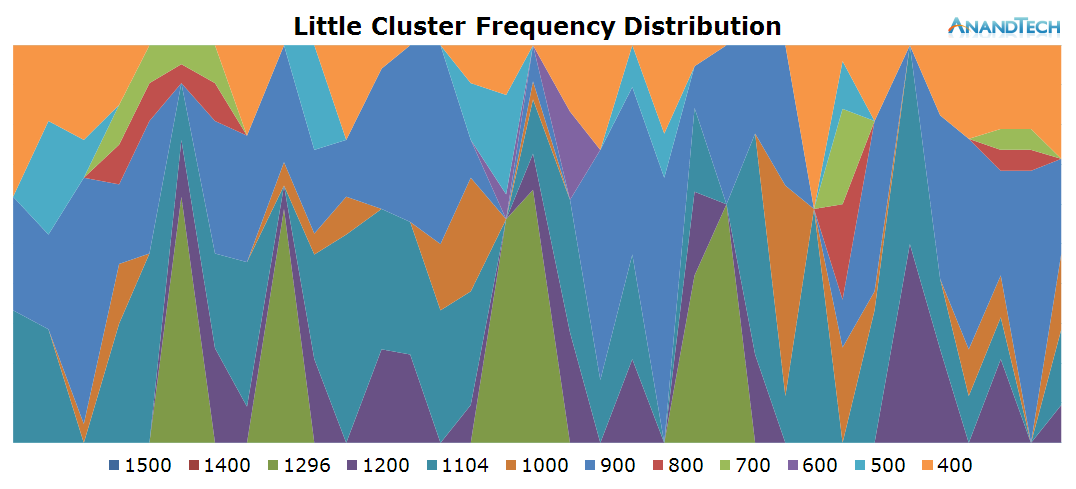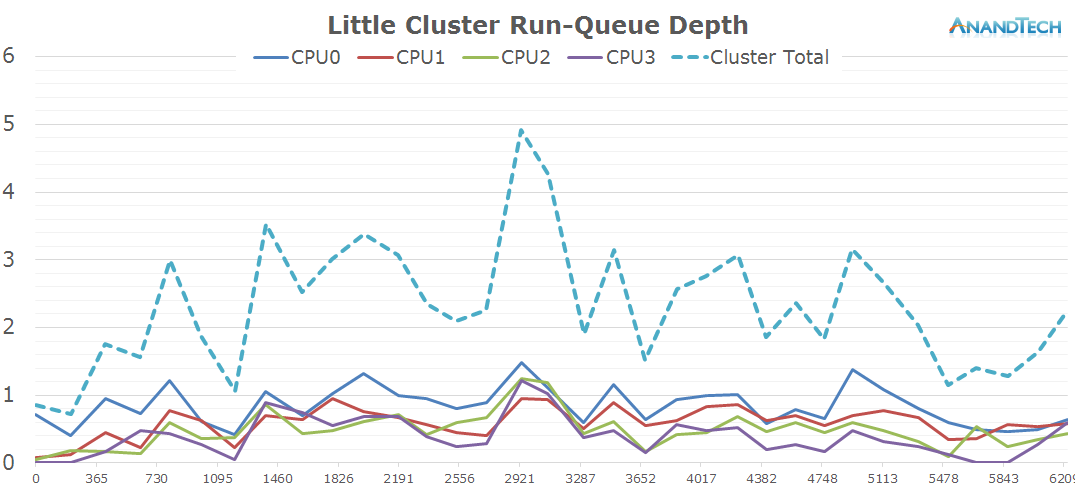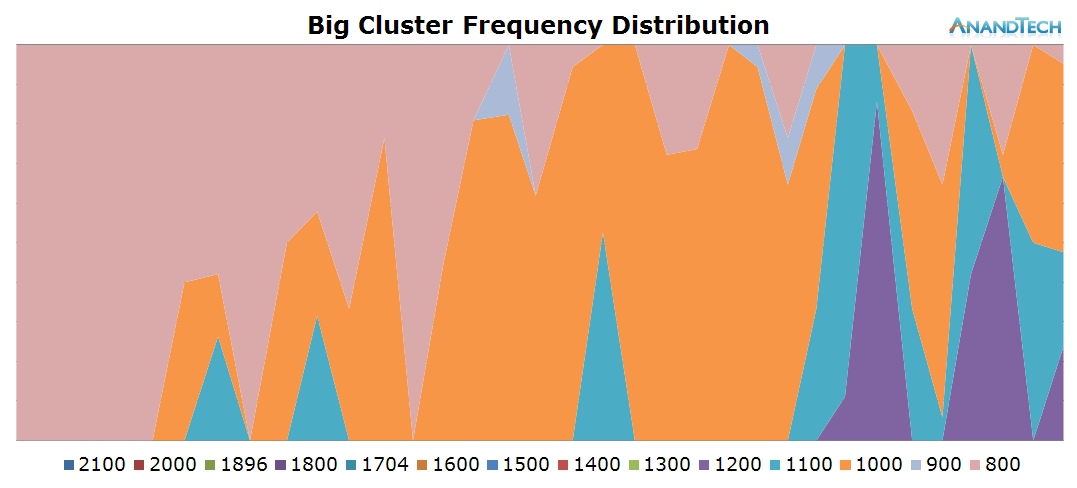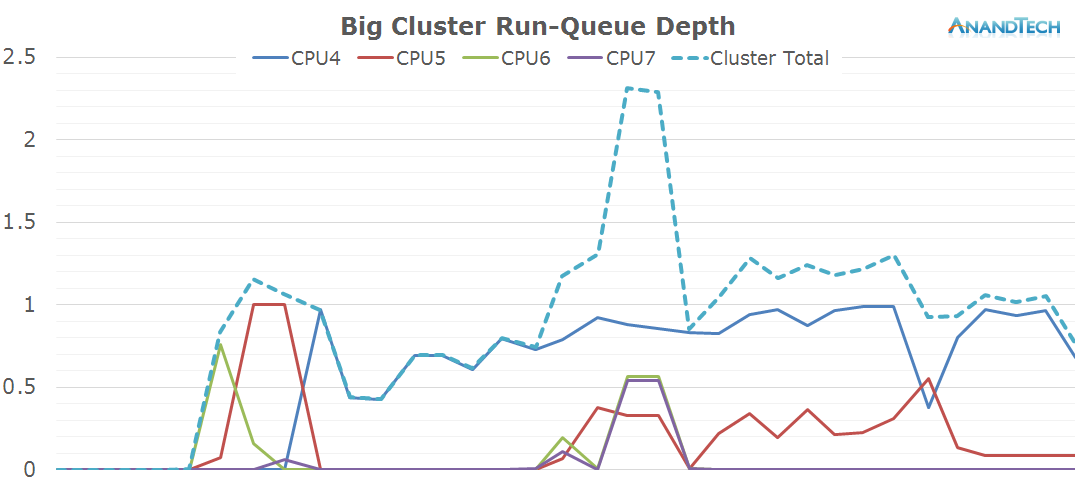The Mobile CPU Core-Count Debate: Analyzing The Real World
by Andrei Frumusanu on September 1, 2015 8:00 AM EST- Posted in
- Smartphones
- CPUs
- Mobile
- SoCs
S-Browser - AnandTech Frontpage
Again staying with the S-Browser, we check the behaviour of just pure web-page rendering. This time we load the AnandTech front-page without scrolling through the page. The page is slightly heavier as we have more graphical elements as opposed to text on the previous article page.
This time around, we a more even distribution of the load on the little cores. Again, most of the 4 CPU cores are active and have threads placed onto them, averaging about 2.5 fully loaded cores.
The frequency distribution is much more variable in this scenario, as the cluster makes wide usage of the frequency range available to itself. On the power state distribution chart we see that most CPUs are still able to enter their power-gating states, indicating that we're mostly handling very short bursty loads.
The biges cores seems much less loaded in this scenario, as most of the time except for a small peak we only have 1 large thread loading the cluster. Because of this, we expect the other cores to be shut down and if we look at the power state distribution we guessed correctly.
The total amount of threads on the system doesn't change much compared to the previous scenario: The S-Browser still manages to actively make good use of up to 4 cores with the occasional burst of up to 5 threads.

















157 Comments
View All Comments
nightbringer57 - Tuesday, September 1, 2015 - link
Very interesting article, much more favourable to multi-core designs than I would have thought.Each article page must have cost an insane amount of time. However, I still feel like some more information could have been useful. This article is geared towards real-world use cases, but I think it would be interesting to repeat this analysis on a few commonly-used benchmarking apps. I feel like this would be interesting to compare them to real-world uses and may help understanding the results.
ingwe - Tuesday, September 1, 2015 - link
Yes that would be very interesting. I am always curious about how synthetics actually compare to more real world applications.Azethoth - Thursday, September 3, 2015 - link
Every single synthetic I have ever seen vastly exaggerates the benefit. I would be interested in an actual real world use case that actually matches a synthetic. It would blow my mind if there are any.Andrei Frumusanu - Tuesday, September 1, 2015 - link
I'll do a follow-up pipeline on this if the interest is high enough.bug77 - Tuesday, September 1, 2015 - link
High enough +1.Please do the follow-up.
tipoo - Tuesday, September 1, 2015 - link
I'd definitely be interested.Drumsticks - Tuesday, September 1, 2015 - link
Yes! This would be neat. Also, great article!ThisIsChrisKim - Tuesday, September 1, 2015 - link
Yes, Would love a follow-up.HanakoIkezawa - Tuesday, September 1, 2015 - link
I'm not sure of the practicality, but I would love to see a follow-up with Denver k1 and the A8X to see how lower core count out of order and in order SoCs are handled.This seriously was a fantastic article Andrei!
kspirit - Tuesday, September 1, 2015 - link
Yes please! +1